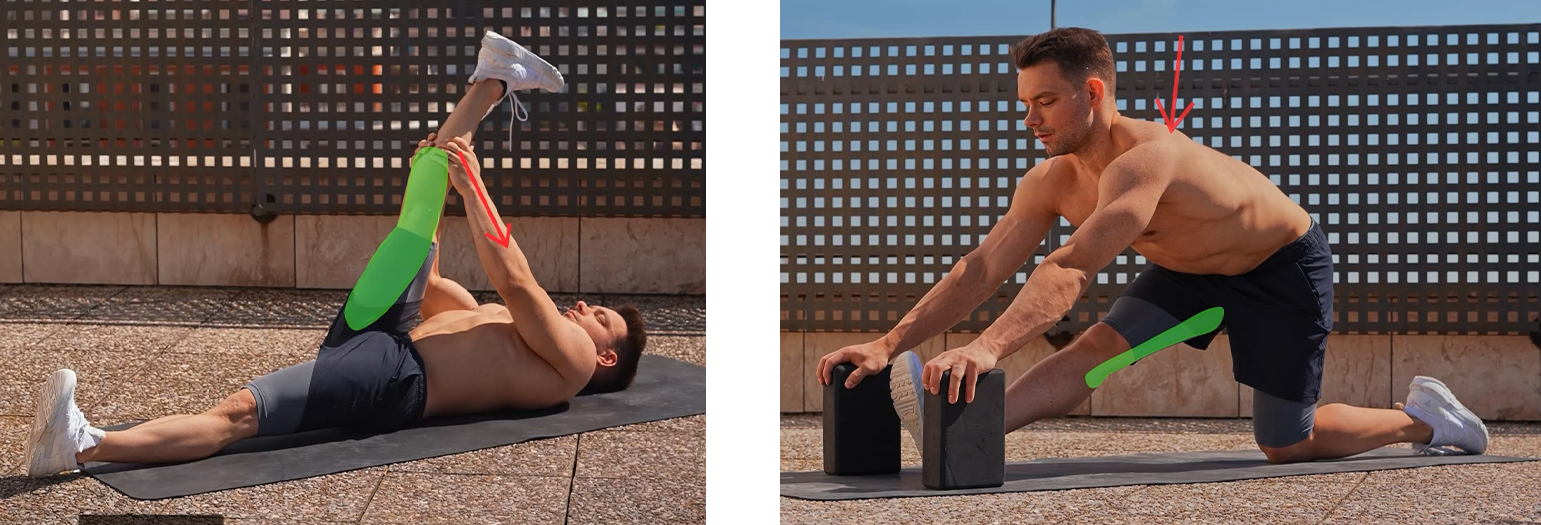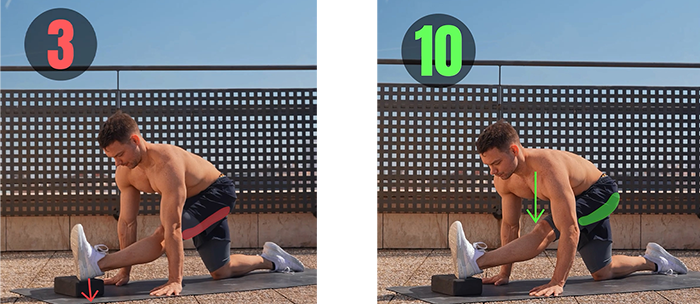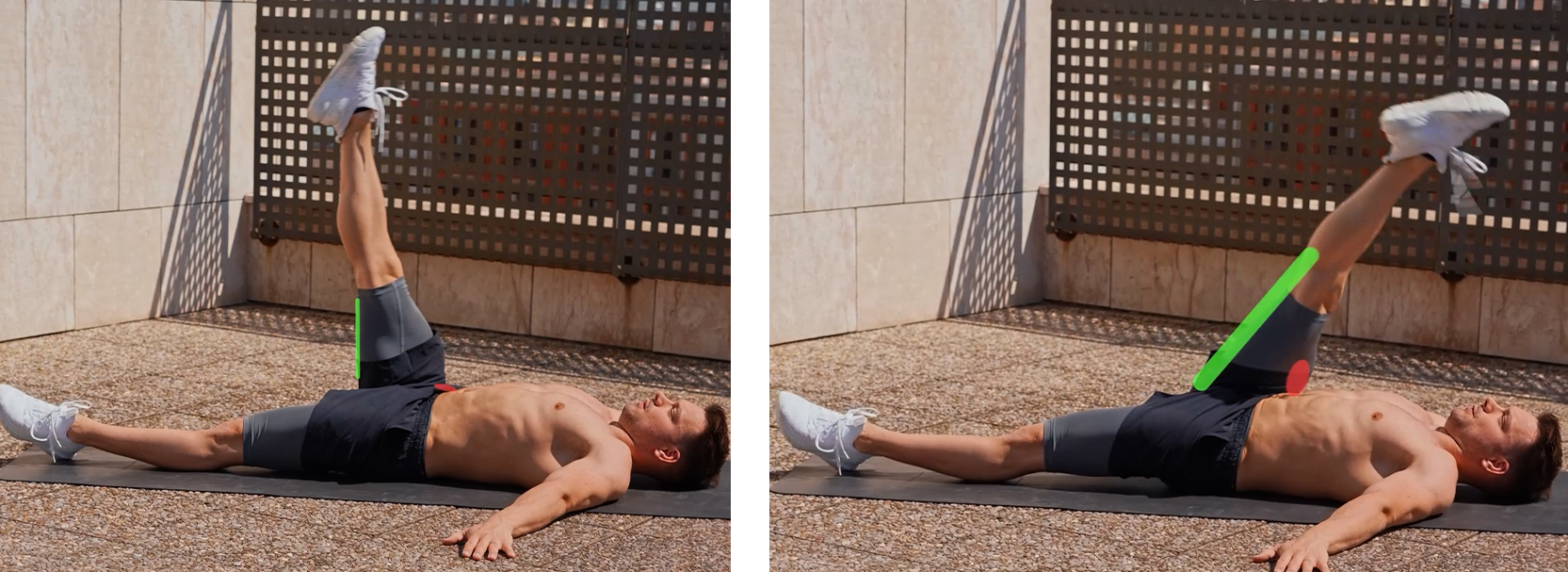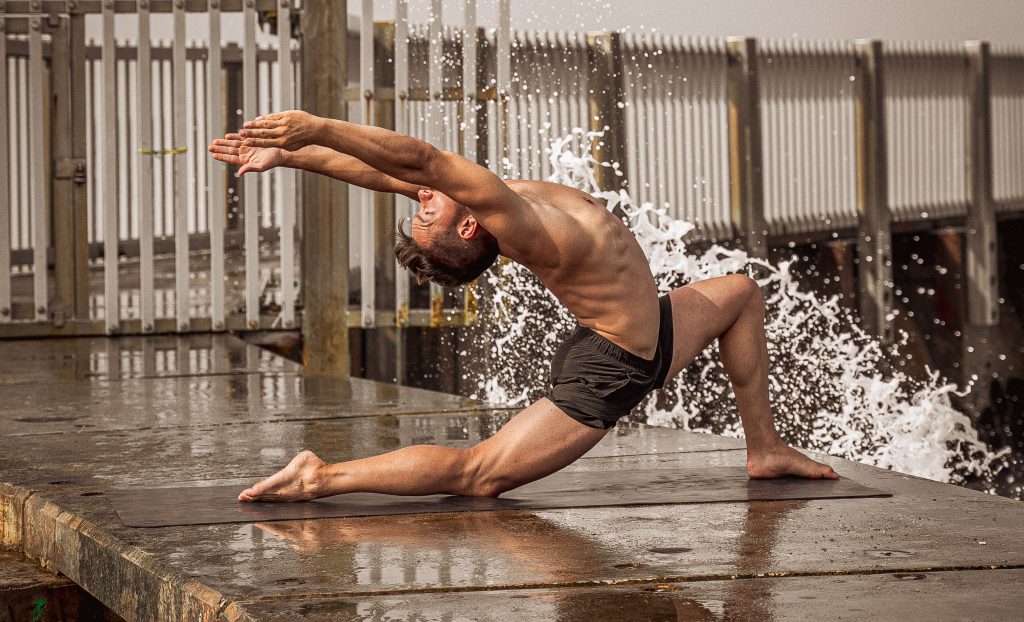5 Types of Flexibility Training to find what is right for you
We all want to increase our range of motion and we want to do it fast so asking which way to stretch will bring greater flexibility gains is a legitimate question. As always the answer is unfortunately not as simple. Whilst almost every stretching routine can improve your flexibility different types of stretches are for different occasions and will achieve different results.
Dynamic Stretches

What are dynamic stretches?
Dynamic stretching uses momentum to gently pull in and out of a range of motion that stretches gently but does not reach the current limit of your mobility. This momentum is created by gravity. You should never be still during dynamic stretches. Make sure to always focus on breathing and proper form. The goal of these stretches is to losen the muscle fibers of the stretched muscle and to prepare your for deeper stretches.
Examples of dynamic stretches?
Almost any kinds of movements that involve the lengthening and shortening of the muscle that you are looking to stretch can qualify as a dynamic stretch. Going from a kneeling position with your hands on the floor in front of you and your hips in the air towards a downward dog and back is a great dynamic stretch for your hamstrings. Stationary forward lunges are also a great way to stretch in a dynamic fashion.
For Who are dynamic stretching techniques?
Dynamic stretching is great for beginners who have little to no experience with flexibility training as pressure is kept light during dynamic stretching. Keeping your flexibility workout short is key when starting off with your flexibility journey as it is easy to become discouraged with long and uncomfortable workouts. These more dynamic movements are great for that as you can hit many parts of your body in little time with smaller discomfort.
They are also great for anybody further along their journey as they offer a great way to warm up and losen tight muscles then dive into deeper stretches.
Static Stretching

What are static stretching techniques?
This is probably the most classic and most common stretching method we see being used in gyms all over the world.
Static stretches are flexibility drills where you hold a static position with the help of an external force such as gravity, a coach or gym weight for prolonged periods.
Examples of static stretching?
There are plenty of great examples for static stretches and even if you didn’t not intend to surely you will find plenty of these in your every day life. Downward dogs, lat stretches on the wall or a deep lunge stretch only to name a few. My personal favorites for the hamstrings are runners stretches and laying 1 legged hamstring stretches on the back.
For Who are static stretches?
Thinking back to flexibility training during my youth I usually think of these time consuming drills where you hold a stretch for a long time. We were usually given these kind of drills to do at home by ourselves. Static Stretched position are much easier to manage and do right as everything happens slowly making these ideal for beginners.
Set yourself up in a position with just a minimum amount of discomfort or pain and place all your attention on alignment, breathing and your mind muscle connection. Use these stretches for relieving tension and to learn how to relax your working muscle group whilst keeping the rest of the body engaged to keep your position stable.
PNF or Isometric Stretches
What are PNF Stretches?
PNF refers to drills that are part of the post-isometric relaxation stretching techniques and should mainly be applied to long kinetic chains such as the hamstrings. Start by getting into a passively stretched position. Now engage the stretched muscle group isometrically against a resistance. Hold this for 3-5 sec before relaxing again for 10sec. This resistance can be applied by a partner, coach or physical therapist, by a strap wrapped around your leg or simply the floor, a chair or the wall.
Examples of Isometric stretches?
Growing up as a gymnast hamstring stretches made up a huge part of my routine as I was beyond stiff. One of my coaches favorites was a standing hamstring stretch with my back against the wall bars. My coach would hold me in place and push my leg up towards the wall. Now from here I would engage me leg muscles to push into his hand before relaxing again. I doubt that we knew back then but intuitively we took advantage of the PNF stretching technique right there.
Using again the example of the hamstrings we have 2 easy to reproduce yet highly effective isometric stretches.
In a traditional runners stretch with the right leg straight in front push the right heel into the floor using your hamstring muscles. After 3-5 seconds of pressure relax your leg muscles again and slide into a deeper stretch.
On the back you can do exactly the same thing. Start by bringing your right leg up. Keep our knee locked and feet parallel. You should feel a slight hamstring stretch already. Now throw a straps or rope around your ankle and push the leg against the strap gently. Hold this Isometric stretch for about 5 seconds before relaxing the hamstring and letting the leg slide closer towards your face.
For Who are PNF stretches?
PNF was initially invented by a physical therapist to help stroke victimes recover. Over time these have been adapted and are a great tool in increase range of motion, mind muscle connection and muscle functionality for all athletes.
For best results these should be performed consistently and after exercising to improve flexibility alongside athletic performance. If PNF is done before training the muscular performance in maximum effort exercises decreases.
Ballistic Stretches
What are ballistic stretching techniques?
Ballistic stretches use momentum created by the opposite muscle, often in combination with gravity in attempt to force the targeted muscle into a deeper stretch. These are more difficult and require more training and warm up. Yet can be highly effective if applied properly.
Examples of ballistic stretches?
Ballistic stretches are used significantly more often than you might expect and can easily be mistaken for dynamic stretches. The main difference really is intensity. A dynamic stretch is for warm up purposes trying to work towards your end range of motion and loosening the muscle fibres whilst a ballistic stretch is quite intense aiming to push past this current limit of motion.
Laying on the back start by lifting the leg up towards your end range of motion. Now from here engage the hip flexors in a dynamic fashion to throw the leg closer towards your face. Only the leg should move and it should come closer to your upper body then when pulling in a static position without momentum.
For Who is ballistic stretching?
Ballistic stretching is not for beginners. These kinds of stretches require lots of coordination as you have to keep your entire body engaged to stabilize your position whilst the stretched muscles have to be fully relaxed.
On top of that the antagonist muscles have to work in a dynamic manner throwing the working limb into the stretch. This is not easy. It requires coordination, strength and a decent amount of understanding of body mechanics.
On top of that risk of injuries is higher in ballistic stretches than in any other stretching technique and we use momentum to push past our natural range of motion. These stretches are great and used to a great extend by professional athletes around the world but please proceed with care.
Active Stretches

What are active stretching techniques?
Active stretching focuses on using one muscle group to stretch another. In a passively stretched position the antagonist muscles engage to pull the working limb into a deeper stretch. Active Stretching is by far the most challenging form of flexibility training and can cause quite a bit of muscle soreness in the antagonist muscles.
Examples of active stretches?
One of the best examples for active stretches are leg lifts. Especially standing single leg lifts. Whilst the core and back keeps the body engaged the the hip flexors work hard to pull the leg up past the parallel. Important to notice here is that the leg should stay up and suspended. if the leg is thrown up by momentum we lose the effects of the active stretch.
A very common example for active stretches in the world of handstands is compression strength for the Press to Handstand. We can again find a great example here in the runners stretch. After assuring that you are in a well aligned position with a straight back engage your hip flexors to lift the leg up. Hold it as high as possible without rounding your back or changing the position of your hips and shoulders.
Are Active Stretches right for me?
Active stretches are for you if you are looking to improve control in your end range of motion. Active stretches are hard on the body and joint and should be treated with respect. If you are only interested in proving your range of motion thee can be skipped as they will not help with this. Keep in mind that your passive flexibility will always be a greater range of motion than your active one!
While you need to warm up for active stretches with passive ones I would almost not even refer to them as stretches but more as conditioning.
What kind of flexibility training is right for me?
Now that we have taken a quick dive into all the different types of flexibility training available to us we need to decide on which one is the most efficient way of stretching for us. And still. The answer is not simple. From m
From my experience there is no one true way. For no one. Something that works for you now will most likely not work a year from now. The goal of training is to evolve. Your routine has to evolve with you.
Over time you get better. You get more flexible and you get more coordinated. Your goals will also change over time. Today you might dream of touching your toes. Next thing you know you will attempt to bite said toes. The sky truly is the limit!
Understanding, practicing and mastering of all these techniques is a great way to start your flexibility journey as it will give you the ability to combine them during your sessions later but you have to keep 1 thing in mind:
No matter which type of stretching you chose you will only see results if you stretch correctly.
How to Stretch Correctly?
Don’t stretch cold muscles. This one should go without saying! The warmer you are the easier it gets to increase your flexibility! Break a light sweat, wear lots of warm cloth and don’t stretch in a windy hallway or under an air conditioner!
Watch your form! Proper alignent doesn’t just determine if your stretching session will bring any results but it also dictates if you will be healthy or get injured. Pay attention to what you are doing, analyze the movements and make responsible choices.
Focus on what you do! Mind muscle connection is key! This one took me personally the longest. I was pushed into gymnastics at a very young age and honestly couldn’t have cared less about my hamstrings in that pike stretch. It took me ages to realize and truly understand what a big part mind muscle connection really plays. Visualize the muscle that is being lengthened. It will pay off!
Breath! When ever you are training your respiration should be an active tool to help you perform better. On each exhale you can relax and stretch a bit deeper. Exhale the pain and relax your muscles!
Build your routine slowly over time. Just like weight lifting stretching will leave you with muscle soreness. Start with 2 shorter sessions per week and work your way up to stretching up to 5 times per week. Not every session has to be at highest intensity. Cycle your workout intensity like you would in any other training routine.
So as you can see there are plenty of different approaches to flexibility training. Each comes with its own advantages and disadvantages but each should have its appropriate place in your workout plan. Learn to understand and combine them all to make the most out of your flexibility training.











